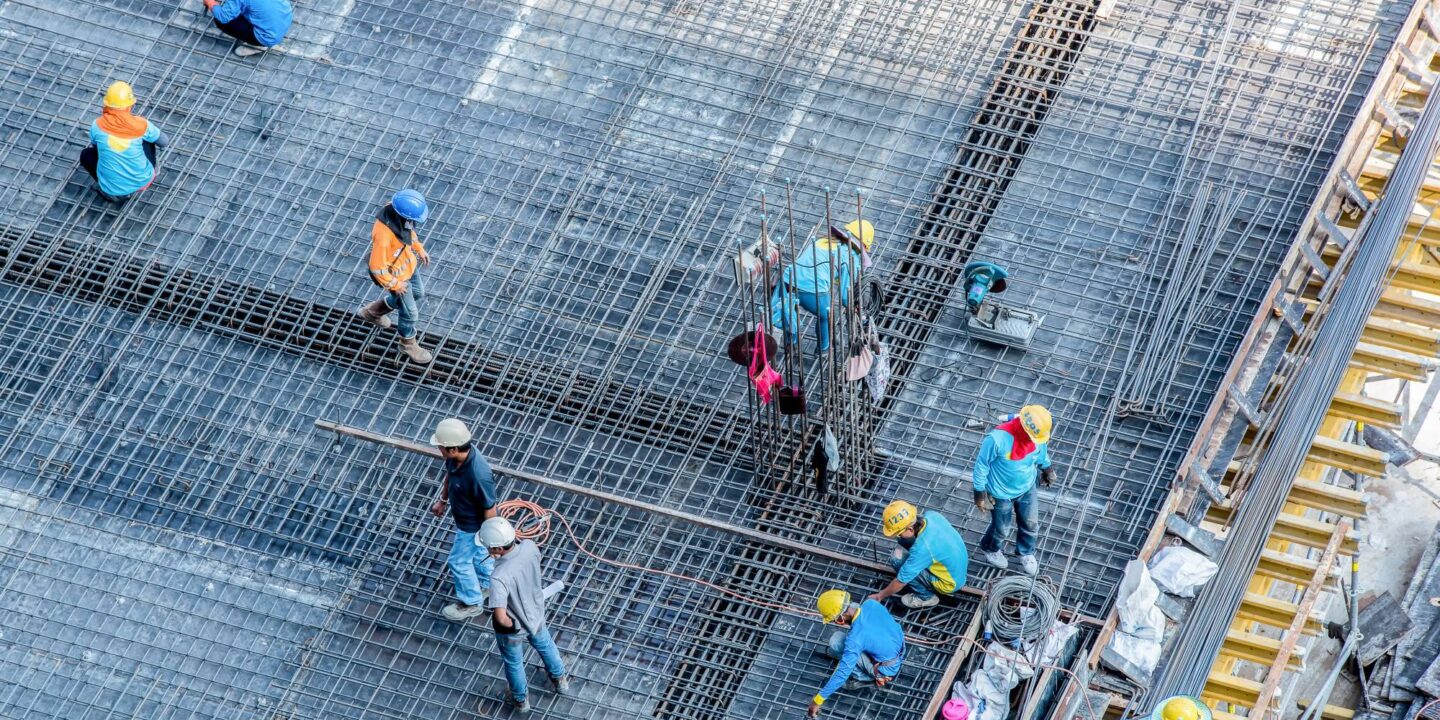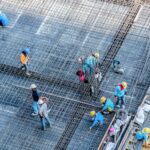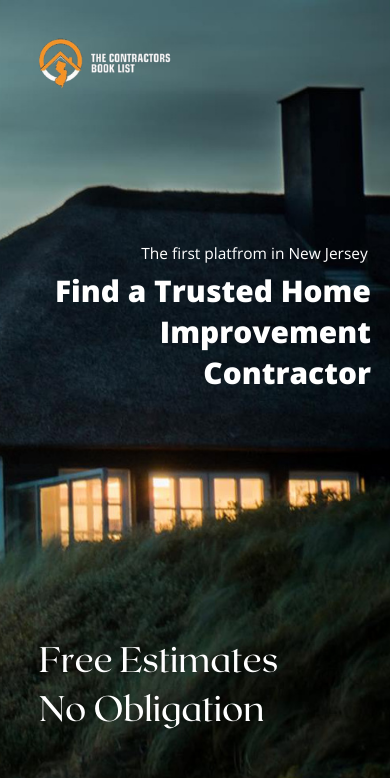
In this blog post we are going to delve more into the lifespan of commercial roof materials When observing the rooftops of commercial buildings, it becomes evident that they differ significantly from the residential roofs surrounding them. Commercial roofs often possess distinct characteristics, including flatter profiles compared to traditional residential roofs.
Table Of Content:
- Different Types of Commercial Roof Materials: A Comprehensive Overview
- Lifespan of Commercial Roof Materials
- How Can We Help You?
Different Types of Commercial Roof Materials: A Comprehensive Overview
The materials employed for commercial roofing also showcase variability, with some overlapping choices, such as metal roofing. Noteworthy selections among the array of commercial roofing materials include:
- Built-Up Roofing (BUR) Membrane: The BUR roofing system is constructed with multiple layers, also known as “piles.” Typically, it encompasses steel decking, a water barrier, layers of insulation, the roofing membrane, and a gravel surface. The layers are interconnected using tar, forming a complex and prevalent commercial roofing solution.
- Modified Bitumen: Employing a layered approach, modified bitumen roofing integrates five asphalt layers with a roof reinforcing fabric, often polyester or fiberglass. The top layer consists of asphalt, creating a robust roofing material. This type of roofing is suitable for roofs expecting considerable foot traffic.
- Metal Roofing: Metal roofs are commonly utilized for commercial properties with varying degrees of slope. These roofs are valued for their durability, sustainability, and fire resistance. Various metal options exist, including copper, aluminium, stainless steel, lead, tin, metal tile, corrugated galvanized steel, zinc, stone, and silicone-coated steel. While metal roofs are an enduring investment, they are known for their higher cost.
- Thermoplastic Membrane/Polyvinyl Chloride Membrane (TPO): TPO roofs are lightweight and installation-friendly while exhibiting exceptional resistance to the elements. These roofs boast UV, impact, fire, and wind resistance, along with protection against chemical damage via ventilation systems. This makes TPO a favored choice for establishments like restaurants, where oils from cooking can permeate ventilation systems.
- Thermoset Membrane/EPDM: EPDM membrane roofs consist of single-ply rubber, rendering them hardy, comfortable, and durable. The primary advantage of EPDM lies in its resistance to UV light and ozone. Moreover, the reflective surface of EPDM contributes to energy efficiency by allowing less light to penetrate the roof, benefiting your business’s energy consumption.
Beyond the lifespan of commercial roof materials, the design of them also varies. While flat roofs are widespread, low-sloped roofs may be suitable for regions experiencing high precipitation. Some commercial roofs even incorporate pitched designs, facilitating effective water and snow runoff, although this feature might be unnecessary in specific climates. The configuration of your roof can significantly influence its longevity and performance.
Lifespan of Commercial Roof Materials
When gauging the lifespan of commercial roof materials, the estimates are generally tied to the type of roofing materials used. However, it’s important to note that these estimates are just rough guidelines and can be influenced by factors like climate, maintenance practices, and the expertise of the roofing contractor.
With that in mind, here are the typical life expectancies associated with the roofing materials mentioned earlier:
- BUR Membrane: 20-30 years
- Modified Bitumen: 20 years
- TPO Roofing: 20-30 years
- EPDM Roofing: 20-35 years
- Slate: 100 years or more
It’s worth highlighting that a well-maintained and professionally installed commercial roof can often surpass these estimates and endure for up to 50 years or more. It’s important to acknowledge that commercial roofs might have a shorter lifespan compared to residential roofs of similar materials due to the heavier use and wear they typically experience.
Additionally, while flat roofs may have moisture barriers, their lack of slope can make them more susceptible to water damage. On the other hand, pitched roofs can be challenging to maintain, potentially impacting their overall lifespan.
How Can We Help You?
A certified roofer can play a crucial role in guiding a homeowner through the process of selecting the appropriate type with the required lifespan of commercial roof materials for their property. With their expertise and knowledge of various roofing materials, a certified roofer can provide valuable insights tailored to the homeowner’s specific needs and preferences.
They can assess factors like the local climate, architectural style of the house, and budget constraints to recommend suitable options. By considering the pros and cons of different roofing materials, such as asphalt shingles, metal, tile, or flat roofing systems, a certified roofer helps homeowners make informed decisions.
They can also explain the longevity, maintenance requirements, and energy efficiency of each material, ensuring the homeowner’s choice aligns with their long-term goals. Ultimately, a certified roofer’s guidance minimizes the risk of costly mistakes, ensures the right type of roof is chosen for the property, and provides peace of mind in the investment’s durability and performance over time.
Interested in learning more about the lifespan of commercial roof materials? Visit The Contractors Booklist platform to explore options and connect with contractors who can help you make the best choice for your commercial property!”







